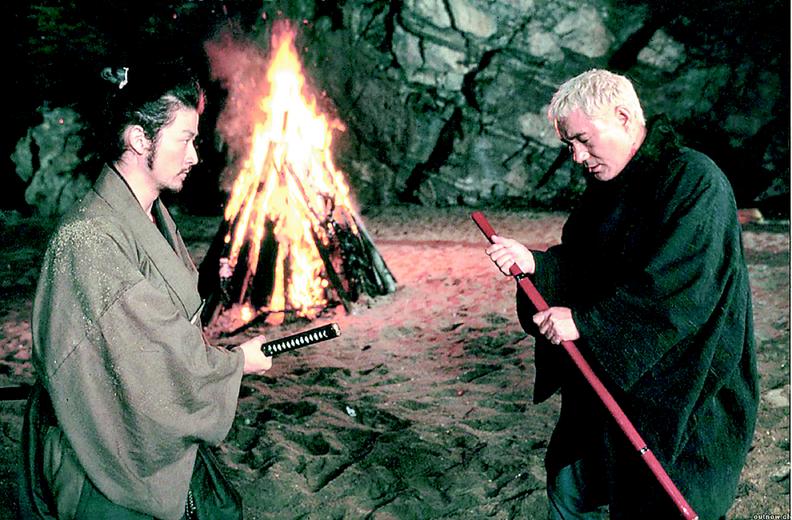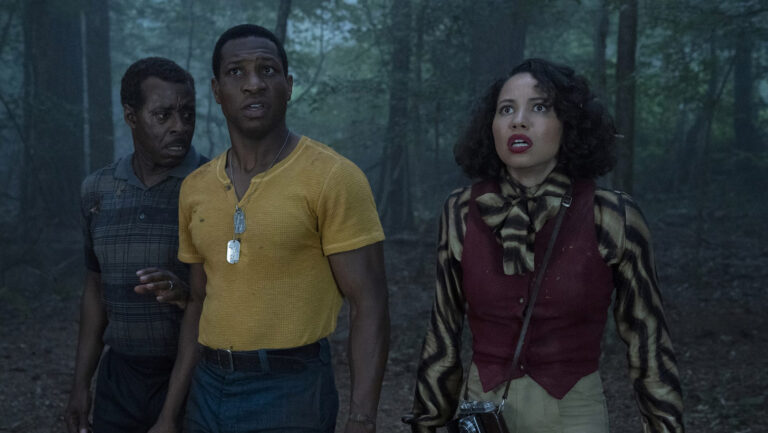The slate-faced Kitano (known as “Beat” Takeshi, when he's in front of the camera) has built himself an eclectic career as both a serious filmmaker (Fireworks, Violent Cop, Brother) and a famous television comedian. (You can spot him as host of Spike TV's imported and dubbed series “MXC,” originally titled “Takeshi's Castle.”) Takeshi is a filmmaker driven by whims, an auteur who does whatever the hell he feels like. Recently, he felt like writing, directing and starring in a new version of Zatôichi. The result is an unpredictable roller coaster of crazed action, giddy comedy and pretty much whatever else Kitano felt like doing on the set on any given day.
Kitano's take on the long-running series sticks more or less with the basic formula. Zatoichi is a blind masseur (and master swordsman) who wanders around feudal Japan gambling, drinking and occasionally fighting off evil yakuza gangs. In this outing, our hero (Kitano, with his hair died shock blond) wanders into a rural village which just happens to be the current battleground between two warring yakuza factions. While weaving his way through this sword-swinging feud, our hero bumps into a bunch of oddball characters including a pair of fake geishas searching for the bandits who slaughtered their parents, a masterless samurai who's given up on redemption and is now selling his sword to the highest bidder, a kindly old farmer's widow and an unlucky gambler who provides much of the film's comic relief.
Kitano mixes together violent action, sentimental drama, wacky comedy and then throws a few Stomp-inspired dance numbers in just for good measure. But it's the film's explosive, near-instantaneous hack-and-slash sequences that really make TBS: Zatoichi come alive. In a swirl of flashing steel and geysering blood, our sightless hero dispatches wave after wave of villainous scum. (Note to newbies: Quentin Tarantino didn't invent that stuff for Kill Bill–he borrowed liberally.) Jazzed up with digital effects for added gore, the fight sequences seem almost ridiculously over the top. But Takeshi isn't afraid of that. He loves over the top. Personally, I think the digital stuff stands out too much, but what the hell.
With its multiple flashbacks and numerous characters, Zatoichi takes a bit of work to sort out. Until about halfway through, most viewers will probably find themselves wondering if Kitano will ever be able to sweep up all the stray bits of plot into a single, coherent story line. Amazingly, right about the time audiences have finally acclimated themselves to Kitano's oddball sense of humor and “anything goes” style of filmmaking, Kitano gets down to the nitty-gritty. The film gets serious for a while and delivers a slam-bang showdown between the forces of good and evil (before wrapping up with a crazy tap-dance routine that is the height of bravura).
In the end, not everyone will appreciate Kitano's skewed vision. Kitano himself could never hope to match the seamless skill with which Shintarô Katsu inhabited this character. Still, somewhere between the samurai cinema lovers, the violence junkies and the foreign film aficionados lies an audience that will appreciate Kitano's bloody, boisterous rule-breaker.



